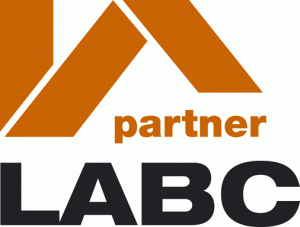| the Christopher Huntpractice architectural and building design for residential development |
|
Site
Menu
 |
|
|
||
Which building contract to
use?
CHP drawings and documents are normally suitable as the main contract documents between the client and builder in securing the works at an agreed price over an agreed period of time. Using this system usually requires a simple exchange of letters providing the following information:- 1 - Reference to the builders quotation figure / tender return form. 2 - Start date and contract period. 3 - Agreed payment terms (stage payments and the amounts). 4 - Agreed retention sum and terms for pay back after a period for latent defects. 5 - Any other reference to alterations, extras or omissions. 6 - Supply of proof of builders insurances. All other relevant schedules and terms are within the specification manuals that CHP provides as part of his building design package. There are additional formal building contracts that can be used alongside the approved plans and specifications such as:- 1 - JCT minor or intermediate works (fee required to JCT). 2 - Federation of Master Builders (FMB) have their own and your builder does not have to be a member to use them (free to use). 3 - National Home Builders Council (NHBC) 4 - NEC3 engineering and construction contract (fee required to ICE publisher) 4 - Other (privately made contract) It is probable that the use of a formal building contract will provide you with additional protection BUT only if you understand the wording and processes required should things start to go wrong. There is also a risk that the terms or clauses may vary between CHP documents and any of the 'off the shelf' formal building contracts mentioned above which could cause confusion. Overloading the 'wordiness' of the terms and contract can also have the adverse effect of your tendering builders loading the price or simply refusing to quote (for the added complications) so you do need to find a balance. Our advise would be to assess the quality of information that CHP has provided for your particular scheme after Building Regulations approval and decide for yourself whether or not you require any additional form of standard building contract just prior to tender. There are also various ways of managing the works. All of CHP documents assumes that you will be engaging a main contractor or builder in the normal way on a fixed price quotation. There are two other alternative methods which are described as follows:- Management Contracting GENERALLY:-
The management contractor’s responsibilities are often to ensure that:
Construction Management GENERALLY:-
The Client is normally used to construction work and may well be expert and knowledgeable. There is a JCT standard form of contract available for this method of procurement.
The above two alternatives are usually only applicable to clients who have some form of building knowledge and the time to get involved with the build on a day to day basis.
| ||
Christopher Hunt MCIAT is not an Architect or a member of the RIBA but a Chartered Architectural Technologist - a professional building designer specialising in residential development from home extensions to new builds including conversions and refurbishments. He is a full member of CIAT which is a different and alternative qualifying body for professionals dealing with building design. If you specifically want an Architect click this link Home page About us Previous schemes gallery Client guides Client options after approval Construction News CIAT News Resources Home Building Contact Us Site Map |
|
|
|
|
Client Area:- Visit our Social Network Pages |
|
|
Work Areas
Residential development for household extensions, conversions and new dwellings. Measured surveys and roof inspection reports. Drawing plans on cad and specifications for planning permission, planning consent, planning approval, local authority approvals, building surveys and party wall act. Chartered Architectural Technologists belong to CIAT (the Chartered institute of Architectural Technologists). Key search phrases include - building designers, extend your home, extension guide, permitted development, planning advice, planning guide, planning gain. |
|
|
Article of the month:- Home building design ideas....
|
This page last updated:
© Copyright Christopher Hunt 2014. All Rights
Reserved.
|



 As part of the design team, a management contractor usually charges a fee for managing
construction work, whilst not actually carrying out the work itself. The method has been also called a “fee
system” of contracting. The management contractor will provide the “preliminary” services such as cranage,
hoisting and lifting facilities, scaffolding, welfare accommodation, lighting, security, power and management
staff.
As part of the design team, a management contractor usually charges a fee for managing
construction work, whilst not actually carrying out the work itself. The method has been also called a “fee
system” of contracting. The management contractor will provide the “preliminary” services such as cranage,
hoisting and lifting facilities, scaffolding, welfare accommodation, lighting, security, power and management
staff.





